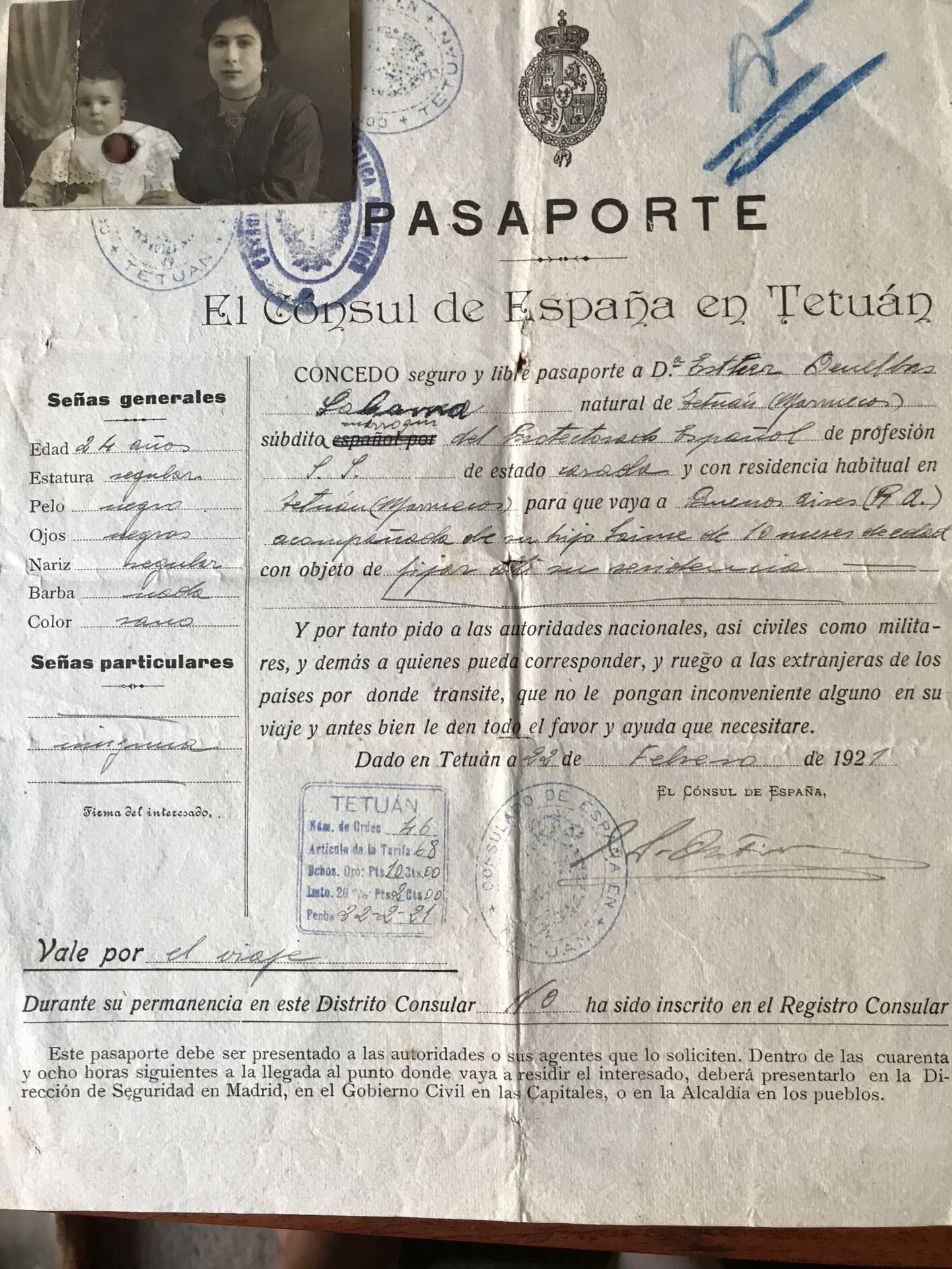
Jews have been in Morocco for more than 2,500 years. Before the 1950s, there were between 250,000 and 300,000 Jews in Morocco; today there are around 2,000–4,000. Casablanca has Morroco’s largest population and richest Jewish life, including six day schools, eighteen kosher butchers, and twenty-eight synagogues. Despite the community’s small numbers today, they remain an incredibly vibrant, strong community, with deep traditions.
L.A. LOCALS
YASMIN
Yasmin Safdie is an Israeli-born, Argentinian-raised Sephardic Jew with grandparents from Syria and Morocco. She works as a psychotherapist, providing mental health services for underserved populations. Something that brings her awe is the richness and power of our Jewish roots, and the way in which we keep them alive through tradition and storytelling.
“My grandfather from my mother’s side grew up in Tetouan, Morocco. On Yom Kippur, my great grandmother used to make fijuelas, a sweet fried dough delicacy that was eaten to break the fast. Jews from Tangier, Morocco would also eat this treat during Purim, instead of the Hamantaschen.”
FIJUELAS
for the DOUGH
2 eggs / 1 teaspoon baking powder / ½ teaspoon salt / 1 tablespoon sugar / 1 tablespoon canola oil / 1 tablespoon water / 1½ cups all-purpose flour
for the SYRUP
1 cup sugar / 1 cup water / 1 tablespoon honey / 1 tablespoon lemon juice
1. In a large bowl, add the eggs, baking powder, salt, oil, and water. Mix with a fork. Gradually add the flour and mix until the dough is consistent throughout. With a rolling pin or a pasta maker, roll the dough out to the thinnest you can—1–2 millimeters. Cut into strips with a pizza or pastry cutter to 1-inch widths. 2. Bring frying oil to high heat, then decrease stove temperature to low heat. This makes the oil just hot enough, but not so hot that it will burn. 3. Now for the tricky frying part. Insert a fork into the end of the dough strip. Put the end into the oil and let it fry for several seconds until it looks crispy. Twist the fork, folding the dough so that a new part of it is exposed to the oil. Keep going until you've made it crispy all the way around. Do not let them brown. Remove and place on a paper-towel covered surface. 4. For the syrup, on medium heat, add the sugar, water, honey and lemon juice into a saucepan. Simmer for about 5 minutes and stir often. Individually place each cooked fijuela into the syrup pan and tilt the pan so the syrup covers the fijuela completely.
Yasmin’s grandfather’s passport from Tetouan
Yasmin’s great-grandfather’s passport. Both passports are in Spanish because Yasmin’s family left Morocco in the 1920s, when it was still a Spanish territory.
HIGH HOLIDAY FOODS
Similar to Persian Jews, Moroccans Jews incorporate many symbolic foods into their Rosh Hashanah meal.
Apples and Honey represent sweetness / Fish represents lightness / Beets represent freedom and growth / Carrots represent positive judgement / Dates represent simplicity / Squash represents expressions of gratitude / A head of lettuce represents leadership / Beans represent abundance / Leeks represent the elimination of negativity / pomegranates represent many good deeds
A press release for the first Jewish Home for the Aged in Morocco, which opened on the day after Rosh Hashanah (1963)
In the village of Inezgane, synagogue members participate in the traditional shaking of the lulav on Sukkot (1987)
NuRoots, from L.A.’s Jewish Federation, helps Jewish Angelenos in their twenties and thirties find and build community across L.A.
Connect with us and reach out with any questions





